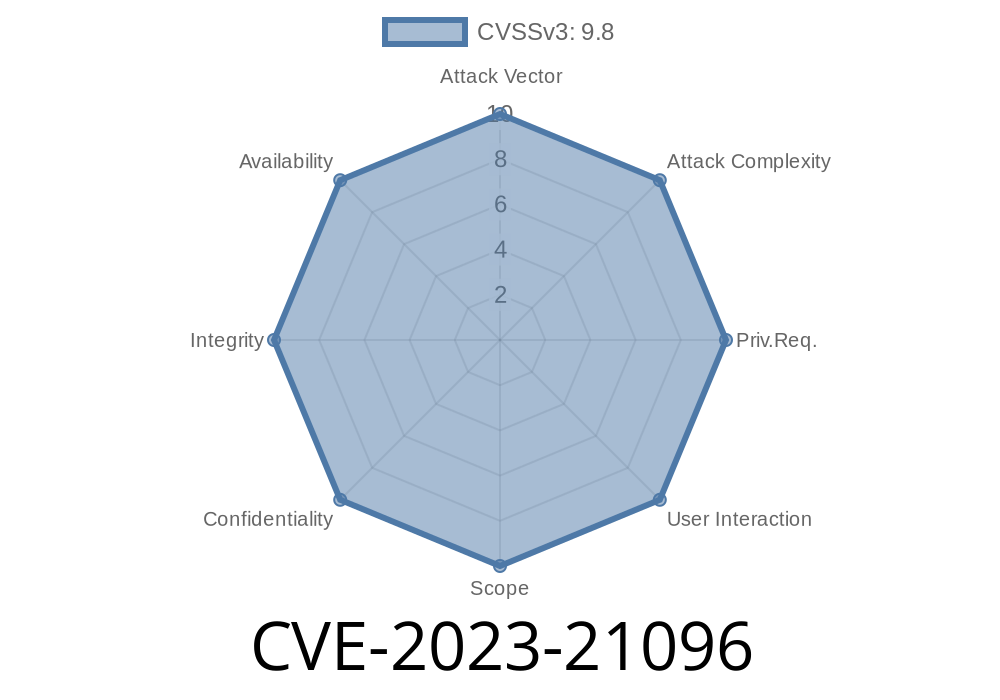A critical vulnerability surfaced in the Android operating system, tracked as CVE-2023-21096. This issue affects Android versions 12, 12L, and 13. It lies in the OnWakelockReleased function within the attribution_processor.cc source file. The flaw is a classic use-after-free bug, which can lead to remote code execution (RCE) without requiring extra privileges or user interaction. This makes it particularly dangerous for both users and device manufacturers.
In this article, we'll break down the vulnerability, show you simplified code snippets, reference the original sources, and explain how exploitation works.
Android Versions Affected: 12, 12L, 13
- Google ID: A-254774758
- CVE Link: NVD - CVE-2023-21096
What is a Use-After-Free Vulnerability?
A use-after-free happens when a program continues to use a memory area after it has been ‘freed’ or made available for other uses. Attackers can exploit this to execute arbitrary code, crash the system, or access sensitive data.
The Vulnerable Function: OnWakelockReleased
The bug lies in how Android handles wakelock release events. When a wakelock is released, the code in OnWakelockReleased attempts to use objects that may have already been deleted (freed), leading to undefined behavior and creating an attack window.
Here’s a simplified version of what the vulnerable flow might look like
// Pseudo-code of the vulnerable function
void AttributionProcessor::OnWakelockReleased(WakeLock* wakelock) {
// ... (some logic)
// Vulnerable operation
delete wakelock;
// ... (other logic that accidentally references 'wakelock')
if (wakelock->isHeld()) { // <-- Use-after-free here!
// Dangerous: 'wakelock' was just deleted!
}
}
Simply put, once an object is deleted, any further usage (dereferencing, method calling, etc.) may manipulate memory in unsafe, unpredictable ways.
AOSP Commit:
- Android patch for AttributionProcessor use-after-free:
Official Android Security Bulletin:
- June 2023 Android Security Bulletin (see A-254774758)
CVE Entry:
The attacker does not need privileged access.
- The bug exists in a component potentially accessible from remote actions or through other chained exploits.
Exploit Scenario
1. Preparation: Attacker crafts a message or sequence of system calls that trigger a wakelock release, possibly from a malicious app or via inter-process communication.
2. Triggering the Bug: The crafted data ensures the vulnerable function processes a wakelock and deletes it, but due to the code’s logic, the pointer to the wakelock is then accessed again.
3. Exploiting Use-after-free: If the freed memory area can be controlled (heap grooming), the attacker could place shellcode or data in the exact spot, so when the system uses the stale pointer, it executes attacker-controlled instructions.
4. Remote Code Execution: The attack could allow code execution in the context of the system process, enabling device compromise, data theft, or persistence mechanisms.
Pseudo-Exploit (for educational understanding only!)
# Not real code, just an illustration of exploitation logic
# Attacker fills memory with a controlled object
spray_heap_with_malicious_object()
# Trigger wakelock release
release_wakelock()
# Vulnerable code dereferences old pointer, jumps to attacker's code!
Google patched this vulnerability in June 2023. All device manufacturers and users should
1. Update Immediately: If your Android device is on version 12, 12L, or 13, ensure you have the latest security patch.
2. OEMs: Integrate upstream AOSP patches (see patch) into custom ROMs and devices.
3. Users: Avoid installing APKs from unknown sources and apply updates as soon as they’re available.
Conclusion
CVE-2023-21096 shows why even small memory management mistakes in low-level code can have big security effects. Attackers can use use-after-free bugs to gain control over devices silently. Both users and vendors need to stay on top of updates to guarantee safety.
References
- NVD - CVE-2023-21096
- AOSP Patch Commit
- Google Security Bulletin (June 2023)
Timeline
Published on: 04/19/2023 20:15:00 UTC
Last modified on: 04/25/2023 22:12:00 UTC
